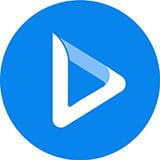
Case Studies
70% of businesses were actively investing in content marketing in 2021. The number is expected to grow in 2022, as the COVID-19 pandemic has been relentlessly forcing companies to build up their online presence.
Content strategy is the string that will pull all your content marketing efforts together and give you a feasible action plan to follow. Persistent effort produces consistent results. When the content you publish is planned and purposeful, you have a much better chance of hitting your intended goals.
If you’re new to the world of content, no worries, we’re first going to cover what content strategy is and why it’s important for your businesses. Lastly, we’ll go over the step-by-step process of developing a content strategy that’s correctly tailored to your brand.
So if you’re ready to start exploring, let’s go!
When people dedicate their time to you, they expect something of value in return. Be it insightful career advice, helpful facts about a topic related to your business field, or simply entertainment from your memes, your job is to ensure the audience gets exactly what they were expecting from your content.
Before you even think about marketing practices, such as cold calling or e-commerce monitoring and tracking, you need to develop a flawless content strategy. Otherwise, your marketing pitch will fall on deaf ears.
Delivering relevant, useful content isn’t solely about what you say. It’s also about how you say it, where you say it, and to whom you say it.
Content strategy is a plan that focuses on the planning, creation, and management of quality content to achieve business goals. It aims to deliver targeted content to the right audience to build long-lasting relationships with them, drive traffic, leads, and sales.
Whether it’s offline or online, content that doesn’t have a pointed direction or purpose is likely to fail at establishing and sustaining a reliable, long-lasting connection with its target audience.
Your content strategy should go hand in hand with your overall brand strategy and be aligned with your brand voice. If you’re just getting started with content creation and haven’t yet toned and tuned your unique voice, check out our guide on developing your brand voice.
There are a few things you need to consider while shaping a content strategy that meets your business requirements:
A well-developed content strategy gives your content marketing efforts a clear aim and direction, thus making sure you don’t waste resources or get sidetracked along the way. This includes defining the types of content you should create for your audience depending on their place in the content marketing funnel.

Strategic content tends to be more structured and consistent. Consistent content is what develops brand awareness and continually drives in new leads that would otherwise be out of your reach.
With no content strategy, it’ll be hard to identify where you are in relation to your business goals. Unless you have specific destinations and a thought-out action plan, you won’t know how close or far away you are from your main objectives. It’s far easier to measure the performance of your content marketing when you have a strategy to adhere to.
With a full understanding of what content strategy is and why it matters for businesses that plan to invest in content marketing, we can now address the next big question — how to work out a plan to efficiently create and manage content. Below you can find 7 actionable steps for building your content strategy.

First things first, what are you aiming to achieve with your content? What are your main marketing goals, and how can content help you hit them? The first stage is all about your brand vision, strategy, and the big “why” of creating content.
The type of objectives you set for your brand will greatly impact the way you should approach them or the type of content you should create.

Do you want to reach a new audience or deepen your connection with an existing one? If your business is still new to the market, and you don’t have an established audience yet, it’s crystal clear that you should concern yourself with the former and forget about the latter for a while.
Similarly, you can ask yourself where your prospective buyers are in the sales funnel. Are they on the awareness stage where they should be informed about your business and products, or are they well-aware of your solutions and should therefore be called to action?
The next critical step on our content strategy journey is learning the ins and outs of your intended audience. When we say “know your audience,” we mean do in-depth research to know who they are (demographics, age, gender, occupation, etc.), what they need, what they like/dislike, and which channels they prefer to be contacted through, and so on.
Your target audience might even be divided into a few segments. It’s always useful to create a buyer persona (or multiple, in case your client base is segmented) with the distinctive demographic information and traits of your audience.
Once you know who your audience is, what topics they care about, how busy they are, and which social media platforms they prefer, you can then determine which piece of content will resonate best with them. This data is invaluable, as it lays the foundation for your content strategy.
So now you have a general idea of what types of content to create based on your marketing plan and objectives. Great! The next step to take will be to figure out who else is going for the same targets. Competitor analysis is crucial if you don’t want to end up with a wobbly content strategy.
Look at the website and social media pages of your direct competitors. What type of content do they rely on? What topics do they cover? Do they have an email newsletter or any other means of reaching their followers?

A great deal of valuable information can be traced from competitor data analysis. Not only will you know what’s already out there and how it typically performs, but you’ll also be able to discover any possible gaps in your market. By bridging those gap areas with your content, you’ll outscore the competitors and establish your authority in your niche.
After analyzing your competitors, it’s time to analyze your existing content. This is where the content gap analysis comes to help.

It’s one of the crucial steps in building an effective content strategy. This is why it’s recommended to include all types of content that you’ve created including but not limited to your website pages, articles, landing pages, social media content, video content, gated content, and other types.
Content gap analysis helps you identify the missing content at each stage of the buyer’s journey: Awareness, Consideration, and Decision. Map out your buyer’s journey from their first touchpoint to the last when they make a decision to choose your company and plan out the content you need to move your audience further in their journey.
Once you find your content gaps, you should decide which types and formats are ideal for creating your missing content. Here’s where you solidify the content specifics based on the planning and analysis that you accomplished during the first 4 steps.
When it comes to choosing what type of content to focus on, pick something that will make sense for your business and the topics you plan to dive into.
For example, one of the most effective content types today for increasing engagement is video. Videos may help niche businesses connect with their customers. As an example, look at the work of TSplus, who produced a detailed video describing how their remote support software can provide your administrators and technicians access to and control over equipment from any location. Customers can then learn about the advantages of using their service over those of their competition.
Also, don’t forget to take into consideration your audience’s preferences.
Your options for the types of content to publish and the formats to follow are quite diverse:
You’re not required to stick to just one type. Select the ones that your followers like to consume and that you or your staff members are skilled at. For example, if you know how to start a podcast, that would be your go-to.
Content marketing is not a linear process but a cycle. Creating and publishing the actual piece of content is a vital part of it but not the only one. There are other steps that precede as well as follow. Let’s have a look at the content marketing lifecycle:

Strategizing and planning beforehand, analyzing and refining afterward is just as essential as the creating process itself.
To organize your website content, including your blog, you can use the topic cluster method. It’s the process of connecting topically related pages into clusters and internally linking to each other. These pages should cover all the aspects of the main topic (pillar page) around which they are gathered.
If you’re planning to create a huge amount of content, you’ll need a content calendar to manage everything and keep it all in one place.
Your content calendar can include:
Gathering everything in one place will help you later analyze and measure them easily.
Your content strategy won’t be relevant unless you can measure it. In other words, you always need to keep track of your content performance once it’s published and analyze the results. Doing so is key to identifying any overlooked areas in your content strategy, which will allow you to adjust and repurpose your content for better results.
Every successful business has KPIs unique to its goals, and so should you. Identify the key metrics to help you assess your content performance. Your metrics could be traffic, search engine rankings, bounce rates or engagement, social shares, and conversion rates — it all depends on what goals you’ve set for yourself.
Over time, you’ll need to evaluate and adjust not only your separate content pieces but also your entire content strategy. Marketing trends are in a constant state of flux, and it’s your responsibility to adapt to them in order to keep your business afloat.
To Sum Up
Content strategy is the mechanism that systemizes your content creation and maps out the path to your marketing goals. A well-developed strategy stretches beyond just the creation of content and encompasses planning, researching, monitoring, and refining the latter.
In this blog post, we gave you a 7-step guide to building your content strategy. Keep in mind that your strategy has to be fully modified for your company to ensure you target the right people that bring the most value to your business.
If you’re interested in diving into video content, you’ll benefit from our customizable video templates to ease the production process. Click the button below to get started!
Article by: Renderforest Staff
Dive into our Forestblog of exclusive interviews, handy tutorials and interesting articles published every week!
Read all posts by Renderforest Staff

